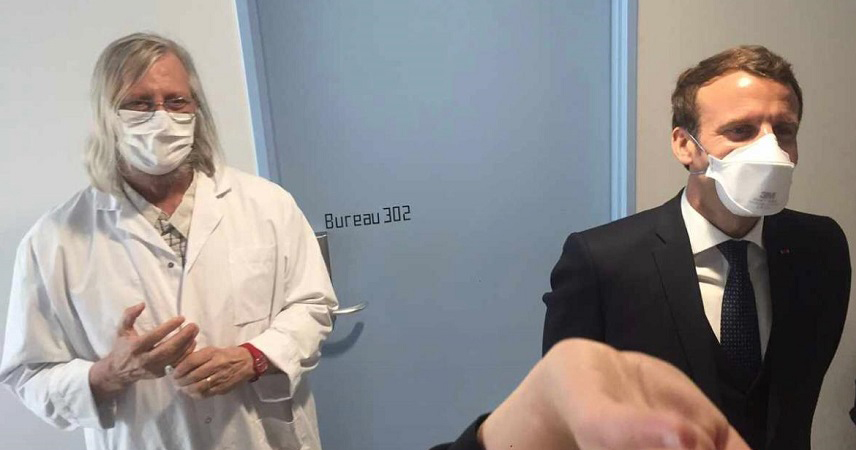By Mark Ellis –

A recent French study found that 92% of COVID-19 patients who began early treatment with an anti-malarial medication combined with an antibiotic were cured after 10 days.
The study was performed among a cohort of 1,061 patients at IHU Mediterranee Infection, Marseille, from March 3rd to April 9th, 2020.
By the 15th day of the study, 98% had been cured using the combination of hydroxychloroquine (HCQ) and azithromycin (AZ). Five patients between 74-95 years old died, less than one-half percent of those in the cohort.
French President Emmanuel Macron visited Professor Didier Raoult, who led the study, at his Marseille hospital on April 9th. After the visit, Macron’s office said it was too early for the French government to assess the regimen’s effectiveness.

Dr. Rauolt found the amount of HCQ in the blood correlated with the outcomes, which may mean that people absorb the medication differently.
Also, certain blood pressure drugs, such as the beta-blocking agent antiotensin II, were correlated with poor outcomes. But overall, no cardiac toxicity was observed.
The most extreme social distancing and shut-down measures were justified by government authorities because of the desire to prevent our health care system from being overrun. But because these severe measures were based on flawed models, it is now apparent there is excess capacity in the system and hospitals are actually laying off staff.
It was also said that a vaccine or a cure would bring a relaxation of these measures, but the results cited above are mostly being ignored by government authorities, who have added a litany of new requirements before bans are lifted. Some would have us stay at home until a vaccine is developed, but because of the way the virus mutates, an effective vaccine may be stymied.
California’s Governor Newsom said the stay-at-home mandate can only be altered when the state is able to: closely monitor and track potential cases, prevent infection of high-risk people, prepare hospitals to handle surges, develop therapeutics to meet demand, ensure schools, businesses and child-care facilities can support social distancing.
The most frightening models predicted one to two million people dying in the U.S., but now the models have been gradually lowered to about 60,000 dying this year. It is tragic, yes, but still less than the 80,000 who died from the seasonal flu in 2018.
The cure is undoubtedly worse than the disease itself, as Americans lose jobs at a level not seen since the Great Depression, find their businesses crushed and freedoms taken away.
The American economy is resembling a famous, thought-to-be unsinkable ocean liner, struck below the surface by an iceberg named COVID. As one unseen compartment after another below the water’s surface floods, the vessel can reach a point of no-return, when it plunges into the abyss.
Such is the case with restaurants, airlines, travel and a host of other industries sidelined, which affects all their suppliers, landlords, and banks. As the flood of red ink affects one business after another, the economy will reach a devastating dénouement, hastened by certain politicians with a desire to tar an unpopular president during an election year.
The only answer is to allow the American economy to reopen in full – including schools, businesses, theaters, stadiums and churches — but continue to protect those with pre-existing conditions and the elderly (first proposed by this writer on March 24th.)
A crippled American economy will lead to disastrous consequences at home and invite dangers abroad. It is time to re-ignite the greatest engine for good the world has ever known, the spirit of the American people when they are able to work, play, and worship freely, in a safe and responsible way.



